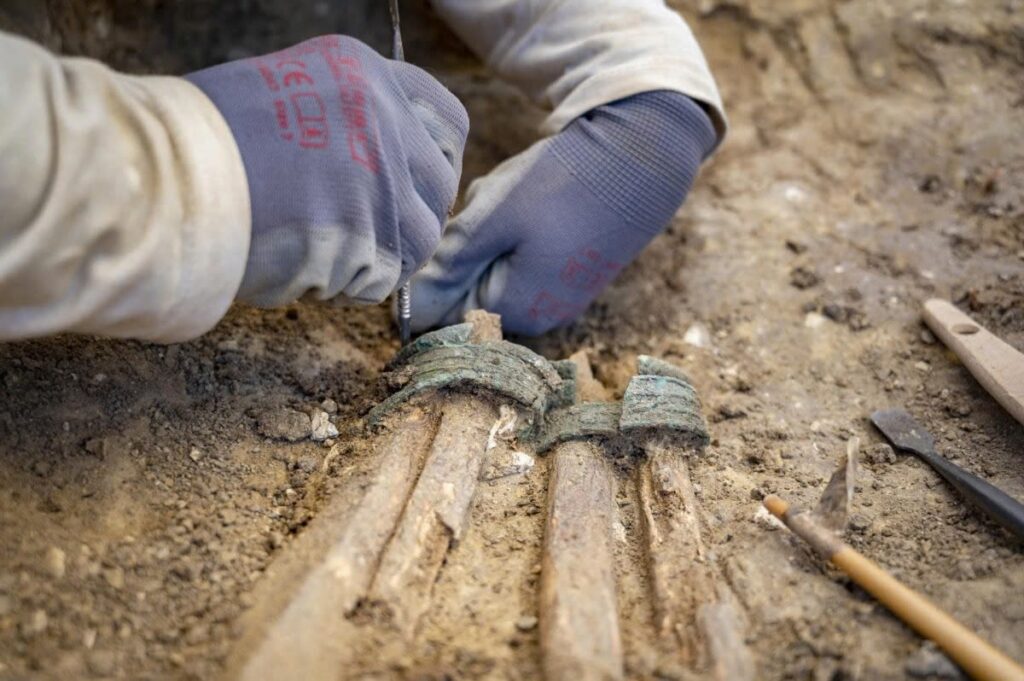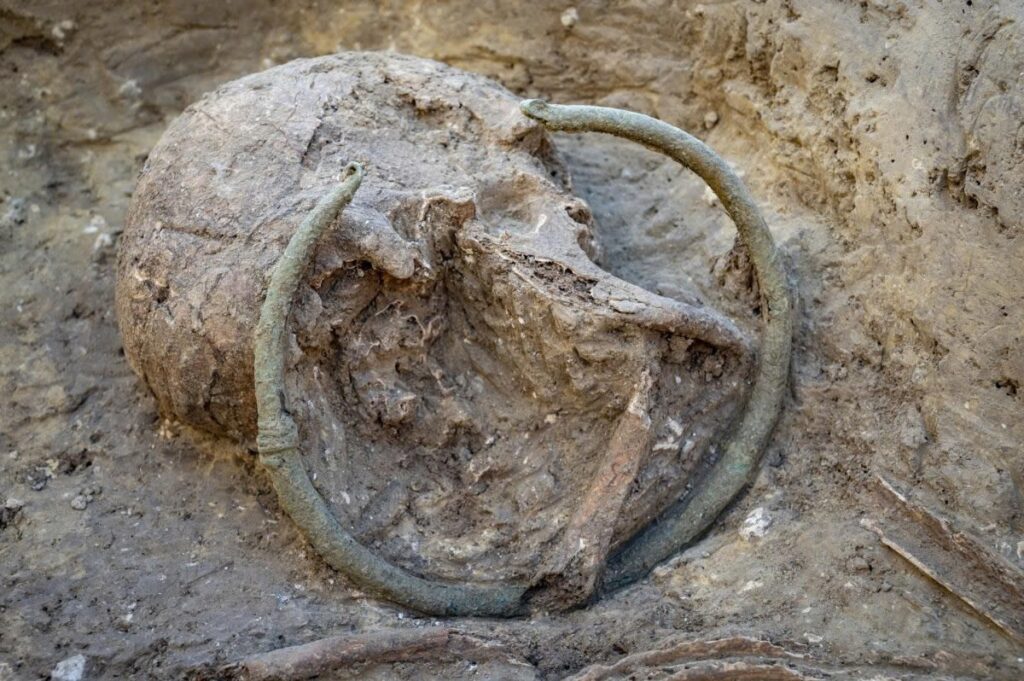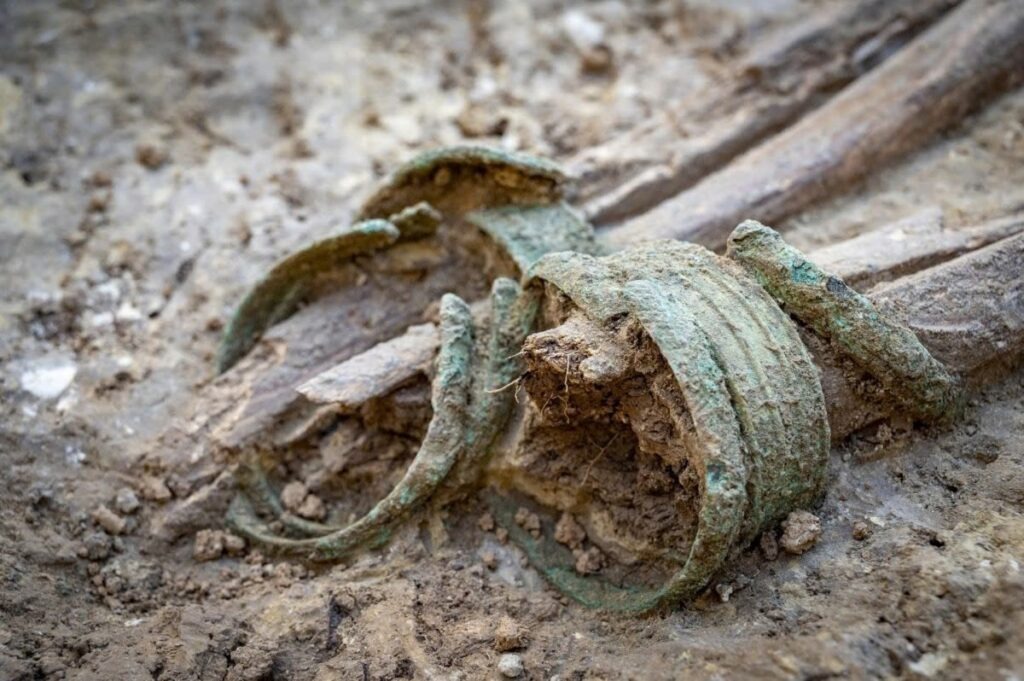Ancient French Necropolis Reveals Remarkable Bronze Age Burial Practices
Archaeologists in southern France have uncovered a fascinating window into early European life and belief systems, unearthing three graves that date back nearly 3,000 years. The discovery — part of an expanding necropolis dating from 900 to 600 B.C. — offers rare insight into the funerary customs that bridged the late Bronze Age and the dawn of the Iron Age, revealing how ancient communities honored their dead and expressed social identity through ritual and adornment.
Excavation Uncovers Three New Graves

The newly discovered burials were found within an extensive necropolis that now stretches across at least 1.3 hectares, suggesting that the site once served as a central burial ground for a thriving Bronze Age community. Each grave tells a unique story of how people in protohistoric southern France viewed life, death, and social hierarchy.
The most monumental of the three was a burial situated beneath a tumulus — an enormous circular mound measuring about 10 meters (33 feet) in diameter and surrounded by a ditch. Archaeologists believe the mound was once encircled by a ring of stones, marking it as the resting place of a person of significance. Yet, in a curious contrast, the burial itself was devoid of luxury items, suggesting that honor could also stem from lineage or ritual significance rather than material wealth.
Jewelry-Laden Burials: A Glimpse into Ancient Fashion

The second and third burials from the necropolis reveal a vivid picture of Bronze Age adornment and craftsmanship.
In one grave, the remains of an adult were discovered wearing a twisted copper alloy bracelet and a necklace of pearls and stone beads, accompanied by two carefully placed ceramic vessels near the head — objects likely meant to accompany the deceased into the afterlife.
But it was the third burial that truly captivated researchers. Described as the richest grave found at the site to date, it contained a person adorned with a tubular metal torc around the neck, three ankle bangles, and three delicate toe rings — a rare combination in Bronze Age Europe. Alongside these ornaments lay a brooch and a large ceramic urn, all signaling the individual’s elevated status or ceremonial role within their community.
Boundaries Between the Living and the Dead

Beyond the artifacts themselves, the spatial organization of the necropolis provides deep cultural clues. Archaeologists found a line of postholes between the tumulus and one of the inhumations, marking what appears to have been a symbolic or physical boundary between the living and the dead.
Nearby, the second burial was bordered by an alignment of stone blocks more than six feet long, possibly serving as a demarcation wall or processional route used during funerary rites. Such details point to a society that understood death not as an ending, but as a passage requiring structure, respect, and ritual boundaries.
Expanding Our Understanding of Bronze Age Society

These discoveries shed new light on the complex social and ritual behaviors of southern France’s Bronze Age populations. The contrast between the richly adorned and unadorned burials suggests that status and spiritual belief were intertwined, with material wealth serving not only as personal decoration but as a marker of identity and remembrance.
The discovery also indicates that the necropolis was more expansive than previously believed, hinting at a thriving settlement nearby. Ongoing excavations are expected to reveal more graves and structures, offering an increasingly detailed portrait of life — and death — in this prehistoric landscape.
A Window into the Past
As each artifact emerges from the soil — from the gleam of a copper torc to the outline of an ancient stone boundary — it deepens our connection to the people who once walked the same ground. Their jewelry, pottery, and monuments were not just objects of beauty, but expressions of continuity, belonging, and reverence for those who came before.
With each excavation season, the ancient necropolis of southern France continues to remind us that even after three millennia, humanity’s desire to honor the dead remains one of our most enduring and defining traits.
Sources:
INRAP – Institut national de recherches archéologiques préventives
CNRS – French National Centre for Scientific Research
Archaeology Magazine – Bronze Age Burial Discoveries in France
ScienceAlert – Europe’s Forgotten Necropolises Reveal Ancient Customs
